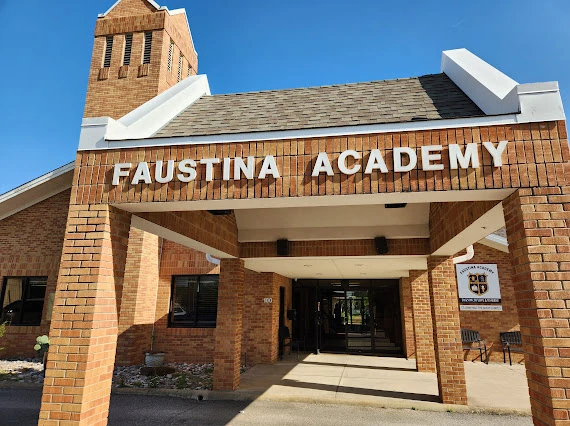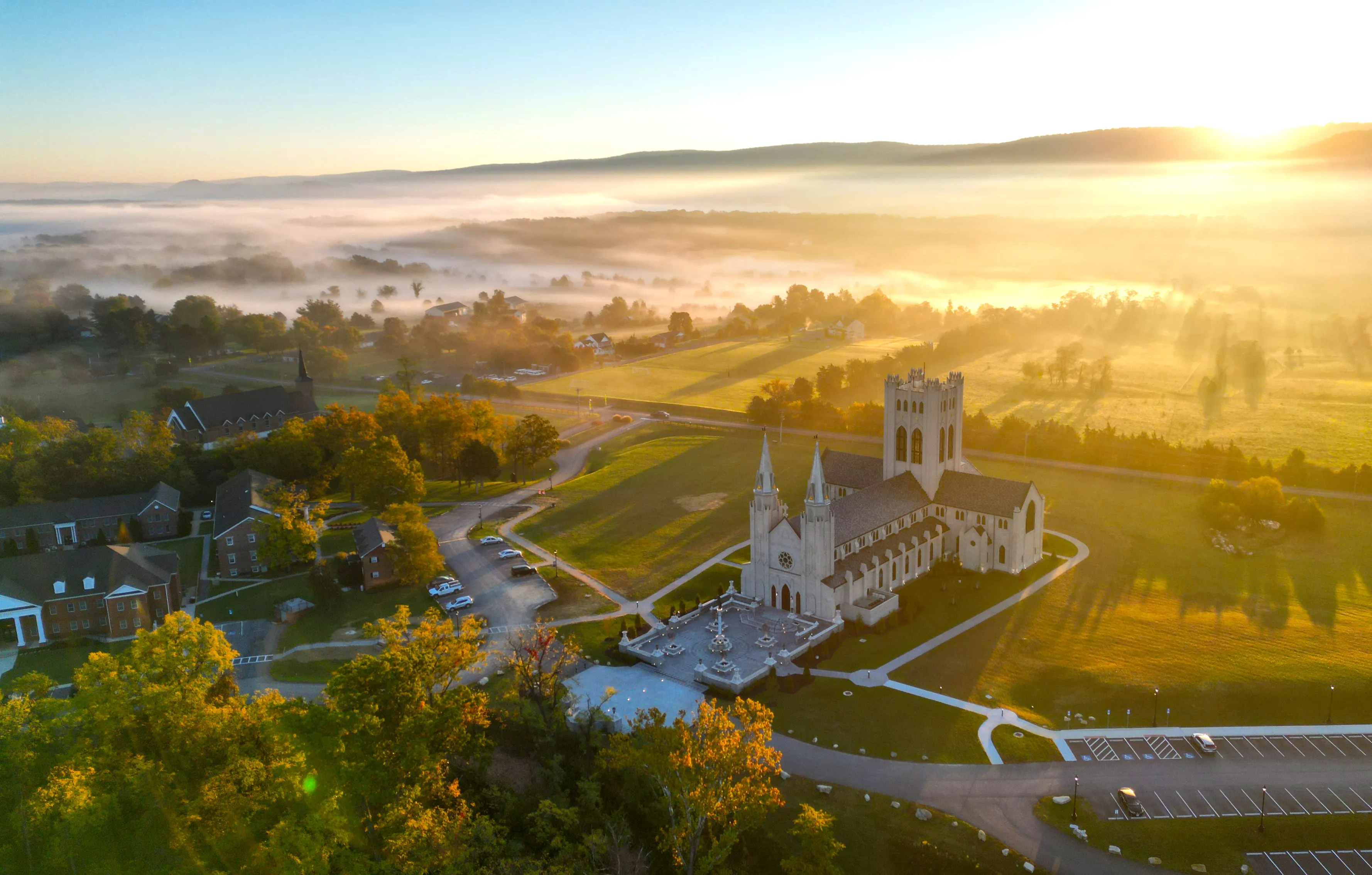

Faustina Academy, a K–12 private school in Irving, Texas, bans social media use among its students, and parents have been totally supportive. / Credit: Photo courtesy of Faustina Academy
CNA Staff, Oct 30, 2025 / 06:00 am (CNA).
As the harmful effects of smartphone use on children become more well known, one school in the Dallas-Fort Worth metroplex is partnering with parents to enforce a no-social-media policy and witnessing students flourish as a result.
Faustina Academy, a K–12 private, independent Catholic school in Irving, Texas, asks parents to formally commit to a school policy of keeping their kids socia-media-free while enrolled.
In addition to asking families to commit to prohibiting TikTok, Instagram, Snapchat, and CapCut, Faustina students have never been permitted to have phones with them during school hours.
Student drivers must leave their phones in their cars during the school day and younger high school students who need phones for after-school activities turn them in to the office in the morning and pick them up after school and can only take them out once they are off campus.
In the school’s early days, years before the smartphone’s launch, Christina Mehaffey, principal since the school’s founding in 2003, told CNA she paid attention to technology trends, researching MySpace and other early social-networking sites available on desktop or laptop computers.
She concluded the sites “opened doors to inappropriate material” such as pornography and violence and “tweaked the tech policy to be more restrictive” over the years by informally asking parents to keep their children off devices at home (they were never allowed to have phones during the school day). She also asked parents to limit their children’s video game time.
In 2017, after seeing the effects of years of smartphone use and social media apps on the children, Mehaffey began asking parents to prohibit social media use among students.
She held two weeks of mandatory parent meetings for every grade level, discussing the harms of popular smartphone apps that were “drawing kids away from reality” and exposing them to “horrifying” content that was “right at their fingertips.”
Mehaffey brought in an IT expert to explain to both parents and students that the app and smartphone creators “intentionally” made the devices and apps addictive because “they knew kids don’t have self-control; all for the sake of making money.”
The expert told parents that kids could easily access content so harmful it was “far beyond what anyone could even imagine,” Mehaffey said.
“Parents were amazed” at what they learned, she said, and 100% were willing to verbally commit to keeping their children off social media.
Mehaffey said it was necessary that every parent “get on board” in order to address the “collective action problem, the fear of missing out” that would be present among the students if every family did not have the same policy at home.
Speaking of the overwhelming support of the parents, Mehaffey told CNA that many parents even “asked me to just make a school-wide policy prohibiting social media so they would be relieved of the burden of having to enforce the rules. A few parents said: ‘Our lives will be easier if the school makes it a policy.’”
So, in 2022, the school’s official policy became “no social media use by Faustina students.”
“Every single parent signed on,” Mehaffey said.
Heidi Maher, whose family has been at Faustina since 2020, told CNA her family already had a no-social-media policy, but when Mehaffey took the no-phone policy in school a step further and banned social media, “it was a huge blessing to me as a parent. It took that battle off the table. We have enough battles as parents. If no one else has social media, I don’t have to battle with my children.”
At previous schools her children attended, Maher said “they weren’t willing to lay down the law on more controversial social issues and they weren’t being direct enough about what being Catholic means.”

“Kids are catechized on the playground,” Maher said. “Their peers, and what their peers’ families are doing, affect them, regardless of what their teachers say.”
“My kids have grown up in one of the most liberal neighborhoods in Dallas. But when it came to education, we wanted an orthodox Catholic school,” she said.
Since the policy change, Maher said she now sees a level of innocence in her children and their friends that she has not seen in a long time.

Jane Petres, who has two daughters at the school, agreed, telling CNA she appreciates raising her family among “mostly like-minded families” and school staff whom she can trust.
“The other parents here seem very ‘with it’ and proactive,” she said of Faustina. “You can ban everything in the world, but unless the parents are enforcing it, kids are still going to be exposed to harmful things.”
She said that at a previous school, an eighth-grade girl became involved with a 45-year-old man (who she thought was a teenage boy) through social media, and rather than recognizing the dangers and changing their policies, the school hushed it up.
Every year, Faustina hosts parent orientations where Mehaffey tells them that “our purpose on earth is to get people to heaven. It has to be in everything we do; in our choices, friendships, our technology use, everything.”

“We want a school where everyone is on the same page, but we’re open to all,” Mehaffey said. “If someone comes in who isn’t Catholic, they have to commit to doing things the way the school does. Not only the technology policy but also prayers, the Mass, all of it. We’re going to teach the truth.”
Read More![Judge rules against saints’ statues on Massachusetts government building #Catholic
Statues of St. Florian (at left) and St. Michael the Archangel (at right) are currently barred from appearing on the planned public safety building of Quincy, Massachusetts. / Credit: Courtesy of Office of Mayor Thomas Koch
Boston, Massachusetts, Oct 16, 2025 / 12:18 pm (CNA).
A Massachusetts trial court judge has issued an order blocking the installation of statues of two Catholic saints on a new public safety building in the city of Quincy, setting up a likely appeal that may determine how the state treats separation of church and state disputes going forward.The 10-foot-high bronze statues of St. Michael the Archangel and St. Florian, which were scheduled to be installed on the building’s façade this month, will instead await a higher court’s decision.The statues cost an estimated $850,000, part of the new, $175 million public safety building that will serve as police headquarters and administration offices for the Boston suburb’s fire department.Quincy Mayor Thomas Koch, a practicing Catholic, has said he chose St. Michael the Archangel because he is the patron of police officers and St. Florian because he is the patron of firefighters, not to send a message about religion.But the judge said the statues can’t be separated from the saints’ Catholic connections.“The complaint here plausibly alleges that the statues at issue convey a message endorsing one religion over others,” Norfolk County Superior Court Judge William Sullivan wrote in a 26-page ruling Oct. 14.The judge noted that the statues “represent two Catholic saints.”“The statues, particularly when considered together, patently endorse Catholic beliefs,” the judge wrote.The plaintiffs who brought the lawsuit challenging the statues — 15 city residents represented by the American Civil Liberties Union of Massachusetts — have amassed facts that “plausibly suggest that an objective observer would view these statues on the façade of the public safety building as primarily endorsing Catholicism/Christianity and conveying a distinctly religious message,” the judge wrote.Rachel Davidson, staff attorney at the ACLU of Massachusetts, who argued the case during a lengthy court hearing on Sept. 19, praised the judge’s decision.“This ruling affirms the bedrock principle that our government cannot favor one religion above others, or religious beliefs over nonreligious beliefs,” Davidson said in a written statement. “We are grateful to the court for acknowledging the immediate harm that the installation of these statues would cause and for ensuring that Quincy residents can continue to make their case for the proper separation of church and state, as the Massachusetts Constitution requires.”The mayor said the city will appeal.“We chose the statues of Michael and Florian to honor Quincy’s first responders, not to promote any religion,” Koch said in a written statement provided to the National Catholic Register, CNA’s sister news partner, by a spokesman. “These figures are recognized symbols of courage and sacrifice in police and fire communities across the world. We will appeal this ruling so our city can continue to celebrate and inspire the men and women who protect us.” The lawsuit, which was filed May 27 in Norfolk County Superior Court in Dedham, relies on the Massachusetts Constitution, not the U.S. Constitution, but there is a tie-in.In 1979, the Massachusetts Supreme Judicial Court adopted the U.S. Supreme Court’s 1971 three-pronged “Lemon test” when considering church and state cases — whether a law concerning religion has “a secular legislative purpose,” whether “its principal or primary effect … neither advances [n]or inhibits religion,” and whether it fosters “excessive entanglement between government and religion.” The state’s highest court also added a fourth standard — whether a “challenged practice” has “divisive political potential.”But in June 2022, the U.S. Supreme Court ditched the Lemon test in Kennedy v. Bremerton School District, a case involving prayers offered by a high school football coach in Washington state.If the Massachusetts Supreme Judicial Court, which is the ultimate interpreter of state law, takes the Quincy statues dispute, it would be the first time the court has considered a case on point since the U.S. Supreme Court’s Kennedy decision.This story was first published by the National Catholic Register, CNA’s sister news partner, and has been adapted by CNA.](https://unitedyam.com/wp-content/uploads/2025/10/judge-rules-against-saints-statues-on-massachusetts-government-building-catholic-statues-of-st-florian-at-left-and-st-michael-the-archangel-at-right-are-currently-barred-from-appea.webp)







